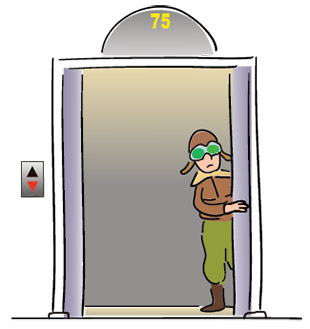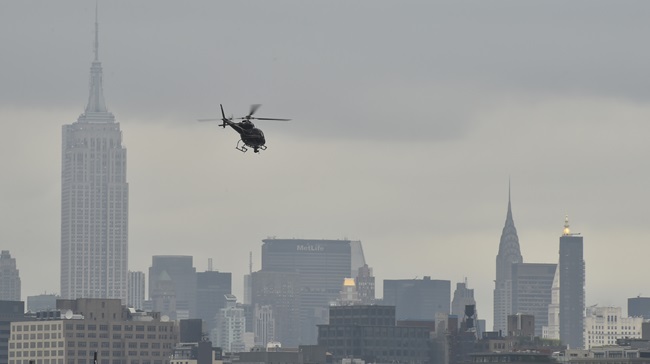 1. From reader Jeff Randolph: By now, most pilots are aware of Automatic Dependent Surveillance-Broadcast (ADS-B), a cornerstone of the NextGen air traffic control system. What is ADS-C?
1. From reader Jeff Randolph: By now, most pilots are aware of Automatic Dependent Surveillance-Broadcast (ADS-B), a cornerstone of the NextGen air traffic control system. What is ADS-C?
2. True or false? During World War II, a Douglas DC–4 was stripped of its four engines and converted into a cargo-carrying glider.
3. From reader George Shanks: What is it about the Tupolev TU–4 Bull, a Soviet bomber, that Americans in particular find so interesting?
4. A pilot begins a normal glide at 10,000 feet msl and maintains the best glide speed throughout the subsequent descent to sea level. As the airplane loses altitude, sink rate
a) increases.
b) decreases.
c) remains constant.
d) cannot be determined.
5. From reader Stacey Taylor: The eight throttle knobs used by the pilot in the cockpit of the Hughes H–4 Hercules are logically labeled 1, 2, 3, 4, 5, 6, 7, and 8. Why are the first seven knobs also labeled E, H, E, H, H, H, and E?
6. A noncantilevered wing has at least one primary strut to provide support. Small or auxiliary struts often are used in conjunction with and to support the main wing struts. What are these called?
7. From reader John Schmidt: Betty Lou Oliver holds the world’s record for surviving an elevator plunge of 75 floors. What does this have to do with aviation?
8. At 9,927 feet msl, Leadville, Colorado is the most highly elevated airport in the United States. What is the temperature at Leadville when the density altitude there is the same as its elevation (assuming no humidity and an altimeter setting of 29.92 inches of Hg)?
Answers:
1. ADS-C is quite different. It consists of avionics (not a transponder) that receive and accept electronic transmissions or “contracts” (hence the C) from a controlling authority to automatically and autonomously provide (via satcom) periodic, on-demand, and conditional position reports—plus real-time weather and other data—from over remote (oceanic, mostly) areas.
2. False. A Douglas C–47 (military variant of the DC–3), however, was converted into a glider and renamed the XCG–17. The conversion, however, occurred too close to the end of the war to be of value.
3. They are identical to the Boeing B–29 Superfortress. During World War II, four of our B–29s made emergency landings in the Soviet Union. The Soviets used these to reverse-engineer (copy) the B–29, which resulted in 847 Bulls (a NATO designation).
4. (b) During a normal glide, the glide ratio (the ratio of forward speed to vertical speed) remains constant. As an aircraft descends at a constant indicated airspeed, its true airspeed decreases. This means that vertical speed must decrease in the same proportion.
5. The Es and Hs designate which engines drive electrical generators and which drive hydraulic pumps.
6. Jury struts. Those used to connect the wings of a biplane are called interplane struts.
7. She was an elevator operator in the Empire State Building on July 28, 1945, when a B–25 Mitchell bomber flying in fog crashed into the north side of the building. The cables of her elevator car were severed and coiled at the bottom of the shaft. That, along with some air compression in the shaft, cushioned her fall.
8. Minus 5 degrees Celsius (or 23 degrees Fahrenheit), which is the standard temperature for an elevation of 9,927 feet. It is determined by subtracting 2 degrees Celsius per 1,000 feet of elevation from the standard temperature at sea level of 15 degrees Celsius. (Interestingly, the density altitude at Leadville is 13,100 feet when ground temperature there is only 75 degrees Fahrenheit.)



